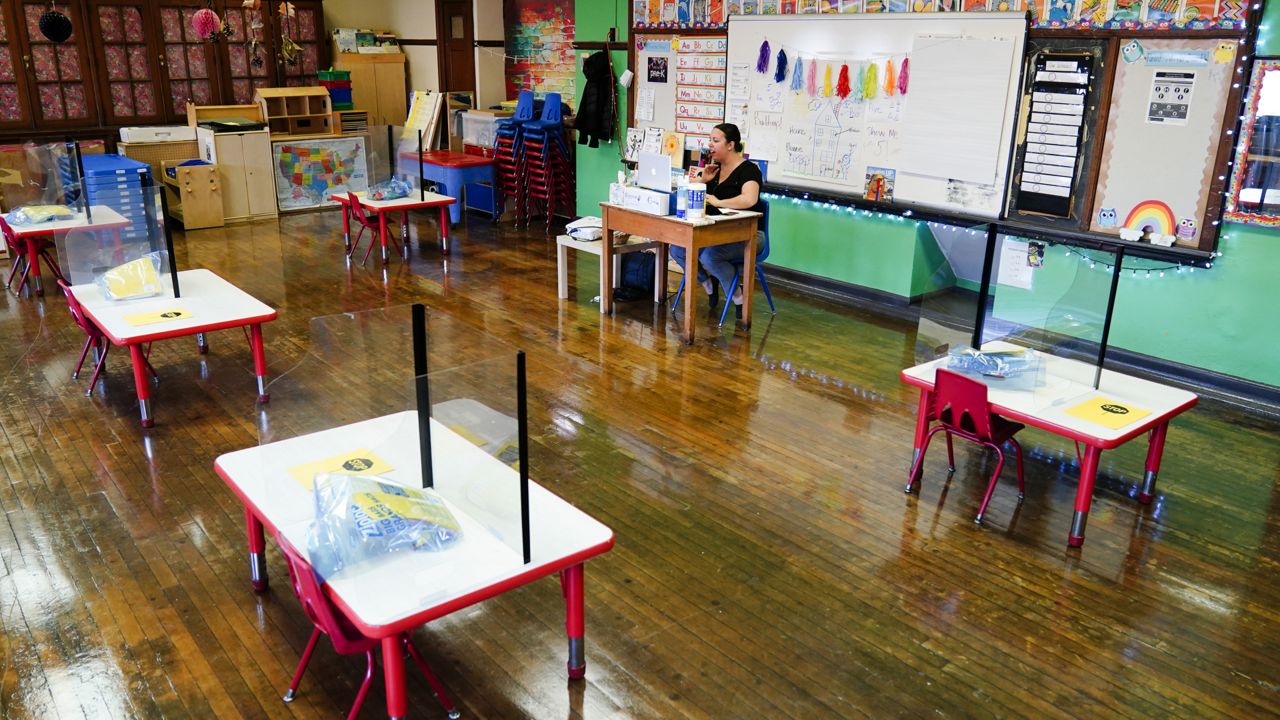The leader of one of the country’s largest teacher's unions penned a letter to officials in the Biden administration, expressing concern that the Centers for Disease Control and Prevention’s recent change in social distancing guidelines will not adequately help mitigate the spread of COVID-19 as schools begin to reopen.
On Friday, the CDC announced that students can safely sit just 3 feet apart in the classroom as long as they wear masks. The revised recommendations cut the previous 6-foot standard by half, a number the agency had recommended since early in the pandemic.
The CDC’s updated guidance also said a 6-foot distance should still be maintained in common areas, such as school lobbies, and when masks can’t be worn, such as when eating.
On Tuesday, American Federation of Teachers president Randi Weingarten penned a letter to CDC director Rochelle Walensky and education secretary Miguel Cardona, saying the group is “not convinced that the evidence supports changing physical distancing requirements at this time.”
“Our concern is that the cited studies do not identify the baseline mitigation strategies needed to support 3 feet of physical distancing,” the letter read in part. “Moreover, they were not conducted in our nation’s highest-density and least-resourced schools, which have poor ventilation, crowding and other structural challenges.”
Weingarten argued that the weakening of one mitigation strategy — i.e., the lessening of social distancing requirements — will require other layers of mitigation to be strengthened. Those requirements should, at a minimum, include “universal and correct masking; effective ventilation; thorough cleaning of buildings; regular COVID-19 testing of teachers, staff and students; effective contact tracing and quarantine/isolation protocols; and the availability of vaccines to all people in schools who are eligible,” she wrote.
The letter went on to cite a number of logistical challenges facing educators in light of the CDC’s new recommendations.
As the health agency recommends students should continue to stay 6 feet away from adults, the AFT wondered what implications that may have for in-person educators, questioning: “What is the expectation for the teacher in a classroom — that she remain in one spot at the front of the room the entire day, not moving about the classroom?”
The letter asked for the Biden administration to “release a national checklist” for the changing mitigation strategies, as well as “conduct comparative studies on mitigation efforts in urban, densely populated schools that do not have up-to-date ventilation systems and have been systematically under-resourced for decades.”
The CDC’s updated guidance was largely a boon for Biden, who has promised to open the vast majority of K-8 schools by the end of his first 100 days in office. But the letter from AFT — which represents upwards of 1.6 million members nationwide — may prove thorny for the administration, which has already been accused of moving goalposts when it comes to school reopenings.
Dr. Lawrence Kleinman, a professor of pediatrics and global urban public health at Rutgers University in New Jersey, said 3 feet is “probably safe” if schools are doing everything right — if everyone is wearing masks correctly at all times and washing their hands, and if ventilation is good. But he said that’s unlikely.
“I will not send my child to a school that’s distancing at 3 feet,” said Kleinman, who has a 4-year-old daughter.
Still, schools in some states had been disregarding the 6-foot guidance, using 3 feet as their standard even before the CDC OK'd the distance. Studies of what happened in some of them helped sway the agency, said Greta Massetti, who leads the CDC’s community interventions task force.
“We don’t really have the evidence that 6 feet is required in order to maintain low spread,” she said. Also, younger children are less likely to get seriously ill from the coronavirus and don’t seem to spread it as much as adults do, and “that allows us that confidence that that 3 feet of physical distance is safe.”
The Associated Press contributed to this report.



